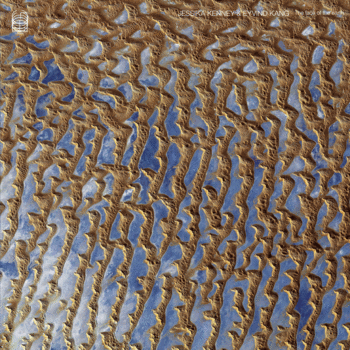
SOMA011 / Jessika Kenney & Eyvind Kang
The face of the earth
- 1.1. Tavaf
- 1.2. Kidung
- 2.1. Ordered pairs I
- 2.2. Ordered pairs II
- 2.3. Mirror stage
- 2.4. The face of the earth
Eyvind Kang (viola, setar, electronics)
Jessika Kenney (voice, percussion, electronics)
All tracks composed by Jessika Kenney & Eyvind Kang.
Tavaf composed by JK based on a ghazal by Attar (12th c.).
Tavaf and Ordered pairs II recorded by Randall Dunn at ADA studios, Istanbul July 2012.
Ordered pairs I, Mirror stage and The face of the earth recorded by Mell Dettmer at Studio Soli, Seattle June 2012 & St. Bartholomeo’s, Bologna.
Kidung and Mirror stage recorded by Mell Dettmer at Dympna’s, Seattle 2012.
Vinyl cut by Rashad Becker at Dubplates & Mastering, Berlin October 2012.
Photos NASA/GSFC/METI/ERSDAC/JAROS, and U.S./Japan ASTER Science Team; courtesy NASA/JPL-Caltech.
:::::::::::
The second beautiful album by the duo of Jessika Kenney — a vocalist known for her haunting timbral sense, as well as her profound interpretation of Persian vocal traditions, and Eyvind Kang — a violist for whom the act of music and learning is a spiritual discipline.
""Work of delicate beauty, as pristine as the surface of a lake at dawn on a summer's morning." —TheQuietus
"ujung jari balung rondhoning kelapa wineng kuwa sayekti dadya usada
The slender inner spine of the coconut leaf Binding together, becoming useful
The compositions on this album are about drawing the binary from the unary, like reflections from a mirror, and its inverse, the concealed unity. Listener/reader, translation/composition, memory/imagination- reflecting each other, they open up a current which flows in a sudden oscillation.
Here we have followed a geological image; in the expression of the face of the earth (from Pr. "rokh-e khåk"), a new spectrum of binaries is revealed. In the Classical Persian traditions, this can be found in the dynamic multiplicity exemplified by the term 'radif', used in both poetry and music, as both poeme and matheme.
We would invite the listener as reader, by making our "reading cards" in the insert, to become a participant in the creation of meaning, including translation processes which seek corresponding musical atmospheres, for example:
The Central Javanese Wangsalan is a kind of riddle(two lines, 12 syllables each, divided 4 and 8), sung by the female vocalist in the gamelan, often using images of natural phenomena alongside descriptions of human characteristics, invoking atmospheres of primordial knowledge, humor, heightened sensation, philosophy, with much hidden wordplay and reference.
—JK/EK
